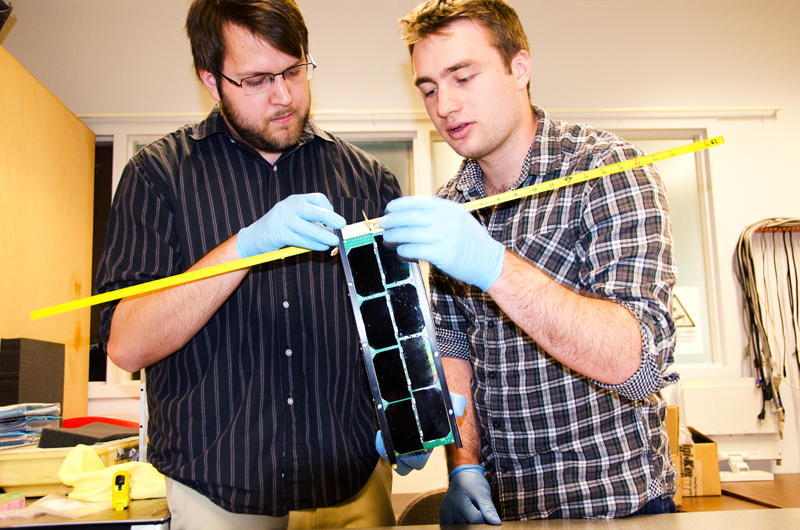
Why Small is the “Next Big Thing” in Aerospace and Medical Devices
Cass Hussman and Devin Pelletier make refinements to their satellite.
- They say the world is getting smaller. It’s literally true1 — a lot of hydrogen burns off the Earth every day—although the saying is more a reference to technology bringing the world closer together.
- Technology is becoming better, faster and more available. It is also more socially accepted. People don’t fear a reliance on technology as much as they once did. They now welcome it.
Two cutting edge sectors are seeing these trends change the way engineers approach problems: aerospace and medical devices.
Aerospace:
The term nanosatellite (10kg or less), originally coined in the 90’s, is somewhat ironic these days as bulky electronics are quickly becoming a forgotten memory. Many satellites are still the size of small houses (the upcoming James Webb telescope has a 3000 ft2 sun shade!), but the trend is to go small. Really small. I’m talking single-PCB-floating-in-space small. The idea is that these devices are better: cheaper to build and get into orbit, more reliable (in numbers), and more effective at covering more space and collecting more data.
I recently graduated from the University of Victoria. During the last three years I was the Project Manager of the UVic ECOSat Team. We designed and built a 4kg nanosatellite that won the Canadian Satellite Design Challenge. As the prizewinners, we earned our satellite a space-launch later this year!
I never thought I could get access to the resources needed to build a satellite, but it turns out that there is in fact a growing market for advanced small order components.
Medical:
This shift to smaller and more accessible devices is also happening in the medical industry right now. We are seeing a large number of products such as wearable health monitors with partner apps hit the market with huge success, bringing raw data to a generation that finally knows what to do with it.
Access to technology translates to direct access to devices. About 1 in 3 people in the world have a smartphone in their pocket2 that are exponentially more powerful than the computers in Apollo missions.
We are now comfortable with relying on and wanting medical products we can use ourselves with little or no expert input. People trust products are being designed well enough that they only need a doctor’s note – or an order to Amazon – and a user manual to get the care they need.
My satellite team didn’t have to put our payload in a 100 kg science-satellite that was required 10 years ago. We just built our own smaller, cheaper version.
I believe this direct approach to available technology is here to stay. It means students can reach for the stars, and medical patients can rely on smaller devices that reach anywhere they need to go.
1 http://www.scientificamerican.com/article/how-planets-lose-their-atmospheres/
2 http://www.emarketer.com/Article/Smartphone-Users-Worldwide-Will-Total-175-Billion-2014/1010536
Nigel Syrotuck is a StarFish Medical Project Engineer. He works on projects big and small. This is his first blog for StarFish Medical.
Image: ring.uvic.ca